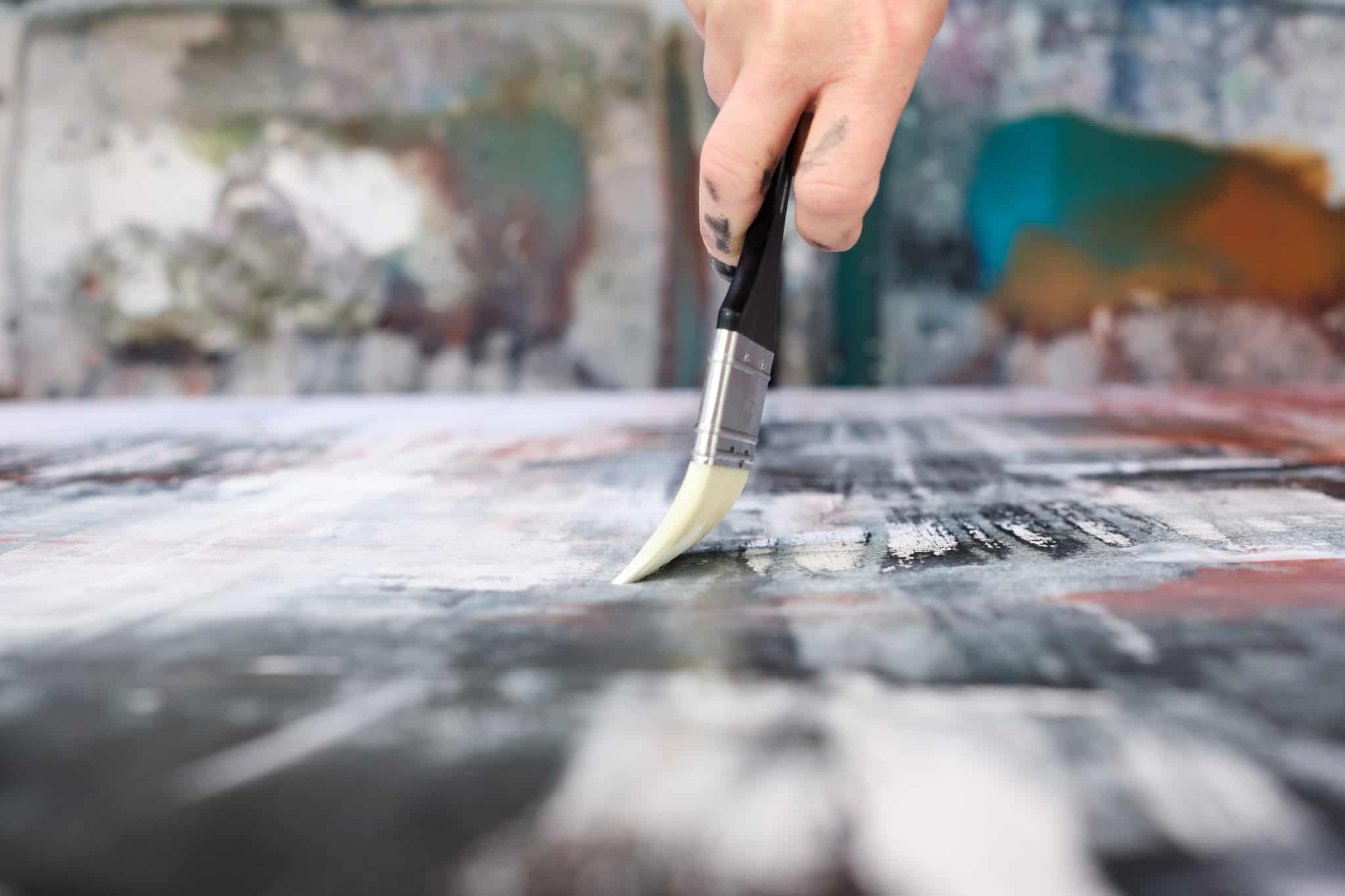aquarylic painting technique

Our aquarylic colors and acrylic colors are highly pigmented and superb to use. The colors are brushed, spatulaed, and poured onto the painting surface pure or even highly diluted with a medium, such as water. Either this layer can be well dried before another layer is applied, or it can also be worked wet on wet, so that the respective color pigments run into each other. The underlying color layer then shines through.
glazes
The glazing technique is an essential part of painting. Any number of layers can be applied. If the same color is used repeatedly, different light-dark elements are created depending on the application – the color tone becomes more intense. When different colors are applied, new color tones are created.
The thin and transparent layer of paint creates a multi-layered color application, which creates depth and a unique expressiveness.
Painting with glazes is a traditional painting technique, which is also used in oil, watercolor, and tempera painting. The paintings take on a unique character. The transparent layers of different colors visually mix in the eye of the beholder and give the painting an extraordinary brilliance and depth.
The white background and the repeated white pours with our white chalk color illuminate the glazes. The so-called depth light is responsible for the brilliance of the colors and, therefore indispensable for the Aquarylic painting technique.
If you paint over a shade with its complementary color, the color becomes dull. If you paint a blue glaze over an orange one, the viewer will perceive it as grayish-brown. If you want to paint brightly colored glazes, you should not use all three primary colors in proportion to the glazes on top of each other. In this way, you avoid clouding the color saturation.
A large number of glazes increases the color depth and thus also creates darker color tones. Too many layers, however, can make the image appear dark. With a light intermediate layer, the next color application shines again.
brushed, spatulaed poured
Paint can be applied pure or diluted with a brush on dry as well as on moistened canvas. Due to the delayed drying behavior of the aquarylic color and our acrylic colors, beautiful color transitions can be brushed.
A spatulaed application of paint has a strong and dynamic effect. Lines and areas and rich color applications are essential compositional elements in the abstract and representational painting.
Pours (i.e. colors diluted with water) serve as the basis for all artwork in the Aquarylic painting technique.
structure with putty
The Aquarylic smooth putty serves as an undercoat or primer. The dried putty makes every further application of paint an experience. Due to the absorbent surface, the Aquarylic Color comes into its own. This is also where our putty differs from most conventional putties because these have a closed surface after drying, which no longer allows the paint to be absorbed. The materials and colors have to work together, so unpredictable effects are sometimes created, which make the artwork grow.
The Aquarylic technique is suitable for every beginner as well as an advanced artist. Develop your style of painting and break your usual patterns!